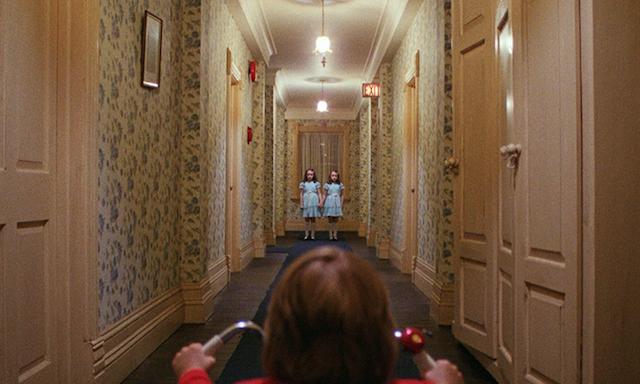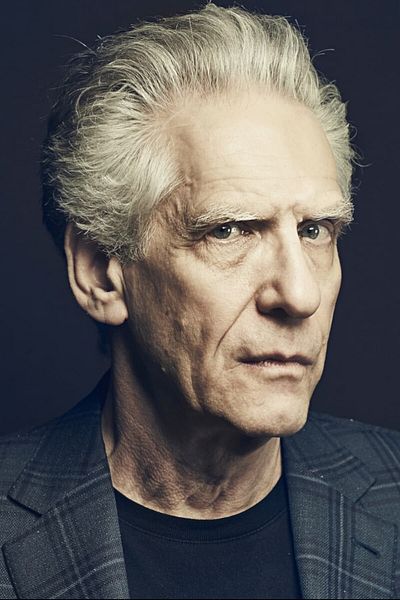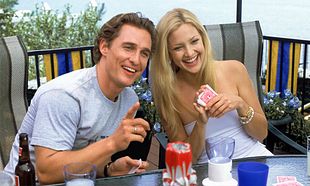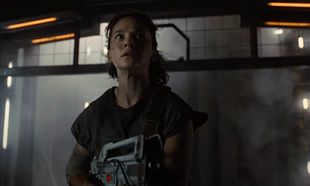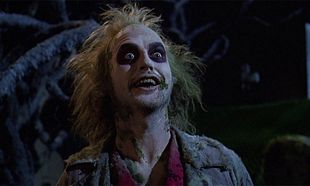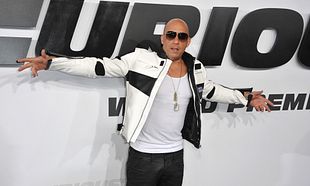As decades go, horror was at its zenith - both critically and commercially - in the '80s.
The proliferation of the home market allowed horror to take root in the popular consciousness, with more and more films being churned out with higher body counts and bloodier sequences. As well as this, films like 'The Shining' and 'The Fly' changed how horror was perceived, not just as a singular experience but as something that could be interpreted and understood.
With that in mind, we've gone through the decade and picked out our ten best horrors. It's worth pointing out that we've chosen 'pure' horror films - hence why 'Aliens', 'Ghostbusters', 'Beetlejuce', 'Gremlins' and so on didn't feature on the list. 'Aliens' is more closer to a sci-fi action whereas 'Ghostbusters' and 'Gremlins' are more comedy than horror.
We've also got our choices of the previous decade, but for now, on with the list...
10. 'Videodrome' (1983)
David Cronenberg's particular slant on body horror might have been more refined in a later entry to the list - 'The Fly' - but 'Videodrome' was Cronenberg at his most cynical and subversive. A sleazy television executive (James Woods) happens upon a reality TV show through a satellite signal broadcast from Malayasia. Without even considering the consequences, he orders the TV show to be broadcast because blood and sex sells.
Of course, the show isn't what it seems and there's more going on than meets the eye. Cronenberg's paranoid vision of the then-now and the future is fascinating, especially when we consider how reality television has become, well, a reality. James Woods' lasciviousness and Debbie Harry's emotionally blank performance just adds to the general creepiness and sliminess of it all.
9. 'Poltergeist' (1982)
The story behind 'Poltergeist' is almost as interesting as the film itself. At the time, Steven Spielberg - who wrote and produced the film - was under contract to Universal Pictures and was unable to direct another film while he was working on 'E.T.: The Extra-Terrestrial'. So it went that Spielberg hired Tobe Hooper of 'Texas Chainsaw Massacre' fame to direct his film. However, Hooper was alleged by some cast members to have not been fully present on set and Spielberg became more closely involved on set. It went so far, in fact, that the Director's Guild of America had to open an investigation into the film to see who really did what.
As you watch 'Poltergeist' with that in mind, it seems perfectly clear it was a Spielberg film as all his hallmarks are there. More pointedly, there's virtually none of Hooper's at any point in the film so it stands to reason that it belongs to Spielberg. Whatever the case may be, Poltergeist is a superior horror film with an incredible score by Jerry Goldsmith to back it up.
8. 'Cannibal Holocaust' (1980)
When we talk about found footage films, 'The Blair Witch Project' is often cited as the first example - but this is incorrect. 'Cannibal Holocaust' was the first of its kind to use the idea of "found" footage in a film. In fact, the idea was so effective that many believed they were viewing a snuff film. A local magistrate in Italy ordered reels of the film to be seized and its director, Ruggero Deodato, to be placed under arrest for obscenity charges.
These were later upgraded to murder charges when an article in a French magazine claimed the murders shown on the film were real. A trial took place and, in order to prove his innocence, Deodato had to bring in the actors to court to prove they were alive. He even had to explain how the infamous 'impalement' scene worked. Looking back on it now, 'Cannibal Holocaust' is still deeply disturbing. Riz Ortolani's beautiful score is completely at odds with the brutal violence on screen, which almost heightens it in a certain way. Not for the faint-hearted.
7. 'Child's Play' (1988)
Chucky has always been an unsettling and controversial figure in the pantheon of horror characters. The franchise was plagued with controversy from the very beginning; a protest gathered outside of MGM / UA on the day of its release, with people fearing that 'Child's Play' would incite violence in children. Several years later, the third film in the franchise - 'Child's Play 3' - would be brought into the public eye with regards to it 'inspiring' the murder of James Bulger.
As director Tom Holland pointed out people could only be influenced by the films if they were unbalanced to begin with. The plot surrounding 'Child's Play' is, of course, completely daft. A serial killer transfers his soul into a doll after he's been shot dead by police. Days later, a workaholic mother purchases said doll from a homeless man for his six-year old's birthday. Using a mixture of RC animatronics and real-life child actors, Chucky was brought to life and made dolls even more creepy for everyone for an entire generation.
6. 'A Nightmare On Elm Street' (1984)
If John Carpenter's 'Halloween' was the first popular instance of the teenage slasher film, 'A Nightmare On Elm Street' was the next evolution. Wes Craven's pulpy approach to horror has been well-documented, with the likes of 'The Hills Have Eyes' and 'Scream' all showing what mastery the man had over horror. With 'A Nightmare On Elm Street', it was Craven at his most structured and, at the same time, his most experimental.
The idea of using the mind - dreams, in particular - as the setting for horror was a fascinating one and watching it, it's clear how Craven is trying to talk about the very real struggle between our dreams and our reality. The use of surrealism, the crispness of the framing and filming, it all blended together with Craven's deft handling of genre and its pulpy origins to create a monster for the decade.
5. 'The Fly' (1986)
David Cronenberg's preoccupation with bodily functions and the idea of flesh as horror is a fascinating one. It's hard to know exactly where it comes from, whether it's about the diseased remains of society or if it's agent of personal change and growth. 'The Fly' is easily Cronenberg's most recognisable film and one of his last horrors.
Based on a remake of the 1958 film, Jeff Goldblum plays a mildly eccentric scientist whose invention - teleportation through pods - will undoubtedly change the world. As he begins a relationship with science journalist Geena Davis, he resolves him to test his creation. Of course, as these things go, it doesn't go well. Like all Cronenberg body horrors, the idea of change and purity of change is a factor. Goldblum's character initially believes that the change in him is a positive, but it slowly begins to destroy him and change him into something inhuman.
It's only at the very end - literally, the final scene - that we see the human return and it's begging for death. Was that its desire all along? Was the human still inside or was it just because its plan had failed? It's hard to know, but one thing's for sure - 'The Fly' is unlike any other horror film on this entire list.
4. 'Day of the Dead' (1985)
While many people cite 'Dawn of the Dead' as George A. Romero's finest work as a director, 'Day Of The Dead' is unfairly overlooked. It was released back in the '80s to middling reviews, many of which cited familiar complaints of Romero's work - too dark, too depressing, too slow and lethargic in terms of pacing.
For all these faults - valid or not - 'Day of the Dead' is still one of the best zombie films ever made. Like all of Romero's work, it's using zombies to talk about something much more - in this case, it's communication and how, even in a tiny bunker underneath the world, it can be all that separates us from the savage. The acting is, admittedly, a lot less focused than 'Dawn of the Dead', but the special effects really are something special.
3. 'The Evil Dead' (1981)
You could argue that 'Evil Dead 2' is a better film than 'The Evil Dead'. However, we made the distinct point at the top of this piece that horror-comedy was out and, when you look at 'Evil Dead 2', it's clear that it's as much a parody of 'The Evil Dead' as it is a slapstick comedy. 'The Evil Dead', however, was anything but. Sam Raimi's insane camerawork, the outrageous guts and blood, the sheer sense of dread and malevolence that seeps out of every scene is almost unbearable at times.
The ability to create an oppressive, disturbing atmosphere with both overt and covert means is incredible - even more so when you consider how Raimi made the film for a pittance. It's schlocky in parts, sure, but it's the very pinnacle of schlock horror.
2. 'The Thing' (1982)
John Carpenter's 'The Thing' is the ultimate in paranoia horror in any decade. The logline of the film just says it all - Man Is The Warmest Place To Hide. Like 'The Evil Dead' and the next entry, what 'The Thing' does spectacularly well is create a palpable sense of dread by using atmosphere, framing, music and colours. The stark white that surrounds the base shows that they are completely and utterly isolated from the outside world, whereas the deep shadows and small corridors on the inside show that they are closed in.
Carpenter manages to blend two trains of thought when it comes to the monster - less is more, but also when he does decide to show you the monster, he does it in the most outward fashion. What makes the creature all the more frightening is that, in reality, it has no shape. It looks like us, it talks like us - it is us.
1. 'The Shining' (1980)
What can be said about 'The Shining' that hasn't already been said? If you're looking for a deeper reading of 'The Shining', check out the documentary 'Room 237'. It explores all the supposed hidden meanings and 'Easter eggs' that Kubrick patterned throughout the film. If '2001: A Space Odyssey' is the greatest sci-fi film ever made, 'The Shining' is the greatest horror film ever made.
Like 'The Thing', the horror is that Jack Torrance is you as you could be beneath the surface. Isolation is the catalyst, sure, but there's something just below the skin that comes out when put under a microscope. The stories around 'The Shining' are just as frightening. Kubrick specifically tormented Shelley Duvall and pushed her close to nervous breakdown. Jack Nicholson improvised much of his scenes, due to Kubrick's changing of the script on a daily basis. All the insane rage came from within Nicholson, probably driven from his frustration at the arduous production.
The symbolism of the film is also impressive. The Native American iconography, the subtle touches in the camerawork, you could dissect the film a million times over and still find something new in every frame and scene. Thirty eight years later, it's still the best horror film ever made. Nothing's come close to topping it.
